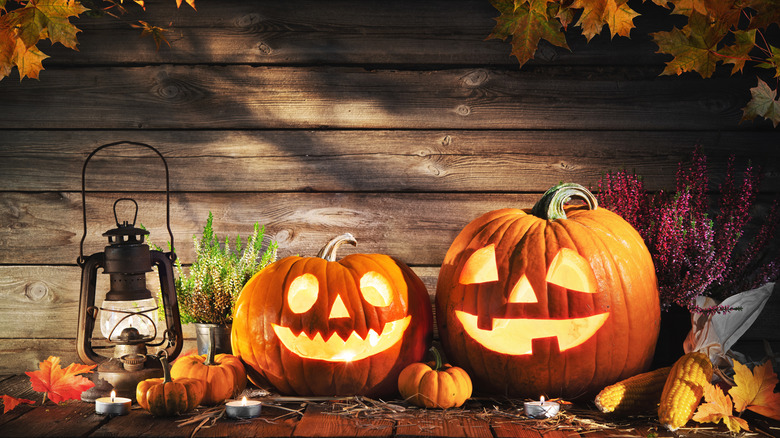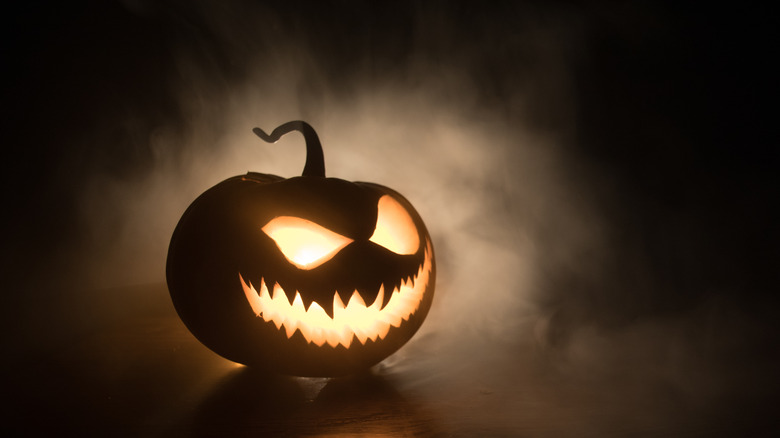Here's Why We Put Out Jack-O'-Lanterns On Halloween
Now that spooky season (and pumpkin season) is finally here, you might start seeing lots of Halloween candy in the stores and Halloween decorations floating around on many people's porches and yards. So many choices — witches, ghosts, bats, candy corn, but most importantly, the prolific jack-o'-lantern. In the present day, these fun decorations are typically a smiling face with triangle features carved in a pumpkin (although less traditional versions feature other creative designs in other root vegetables; check out Ray Villafane's creations). Creating a jack-o'-lantern can be an exciting bonding project for the whole family.
While carving jack-o'-lanterns during autumn may be a challenging yet entertaining task, many may have not thought about the exact origins of jack-o'-lanterns, and why exactly they are used. Where exactly does the tradition of jack-o'-lanterns come from, and why do we put them out every Halloween? A pumpkin might not be a root vegetable, but the jack-o'-lantern has deep historical roots of its own.
Jack-o'-lanterns have roots in Irish legends
For jack-o'-lanterns, we have the Irish to thank. According to History, jack-o'-lanterns have been around for centuries, and started with a superstition in Ireland about "Stingy Jack," a man who was allowed to enter neither Heaven nor Hell after playing a trick on the Devil. After the Devil sent Jack packing into the night, with only a lit coal to guide him, Jack decided to put the coal in a carved out turnip to form a lighting device, and his spirit has been roaming the Earth ever since. He was referred to as "Jack of the Lantern," which then got abbreviated to "jack-o'-lantern." Wanting to frighten away the deceitful Jack and other evil spirits, the Irish and Scottish began to leave turnip and potato carvings with scary faces on them in their windows or rear doors as a deterrent.
However, it wasn't until the tradition reached the United States that pumpkins began to be the most commonly used food for jack-o'-lanterns. And it turns out, the tradition doesn't seem to be going away anytime soon.

